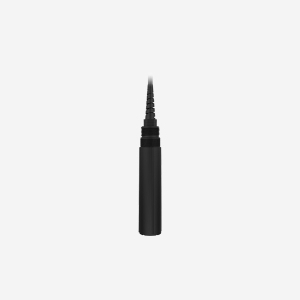Water is a precious resource that is essential for all forms of life on Earth. However, the quality of water is often compromised due to various factors such as pollution, contamination, and climate change. This can have serious consequences for human health, ecosystems, and the overall sustainability of our planet. To address these challenges, there has been a growing need for reliable and accurate tools for monitoring and controlling water quality. One such tool is the use of water quality sensors. In this article, we will explore the importance of water quality sensors in ensuring clean and safe water for all.

The Importance of Water Quality Monitoring:
Water quality monitoring is a critical aspect of ensuring clean and safe water for all. It involves the continuous measurement and analysis of various parameters that affect water quality, such as pH, temperature, dissolved oxygen, turbidity, and chemical concentrations. By monitoring these parameters, it is possible to detect potential problems early on and take appropriate action to prevent contamination or other issues that may arise.
Traditionally, water quality monitoring has been done manually using laboratory-based methods. However, this approach is time-consuming, labor-intensive, and can be prone to errors. With the advent of modern technology, there has been a growing interest in using automated systems based on water quality sensors for real-time monitoring and control of water quality.
Water Quality Sensors:
Water quality sensors are electronic devices that measure physical or chemical properties of water and convert them into electrical signals that can be easily interpreted and analyzed. They come in various types and configurations, depending on the specific parameter being measured. Some common types of water quality sensors include pH sensors, temperature sensors, dissolved oxygen sensors, turbidity sensors, and chemical sensors.
pH sensors measure the acidity or alkalinity of water and are used to monitor changes in pH levels that may indicate the presence of contaminants or changes in water chemistry. Temperature sensors measure the temperature of water and are used to monitor changes in temperature that may affect the growth of microorganisms or the effectiveness of disinfection processes. Dissolved oxygen sensors measure the amount of oxygen present in water and are used to monitor changes in oxygen levels that may indicate the presence of organic matter or other contaminants. Turbidity sensors measure the cloudiness or haziness of water and are used to monitor changes in turbidity that may indicate the presence of suspended particles or other impurities. Chemical sensors measure the concentration of specific chemicals in water and are used to monitor changes in chemical concentrations that may indicate the presence of contaminants or changes in water chemistry.
Benefits of Using Water Quality Sensors:
Using water quality sensors for monitoring and control of water quality offers several benefits over traditional manual methods. Some of these benefits include:
Real-time monitoring: Water quality sensors provide real-time data on water quality parameters, allowing for immediate detection of potential problems and prompt action to be taken. This can help prevent contamination or other issues before they become serious problems.
Accuracy: Water quality sensors are highly accurate and reliable, providing consistent measurements over time. This helps ensure that accurate data is available for decision-making and problem-solving.
Cost-effectiveness:
Automated systems based on water quality sensors can be more cost-effective than manual methods in the long run, as they require less labor and reduce the need for frequent sampling and laboratory testing.
Applications of Water Quality Sensors in Drinking Water Safety and Treatment:
Scalability:
Water quality sensors can be easily scaled up or down to suit different applications and sizes of water treatment facilities. This makes them versatile tools that can be used in a wide range of settings.
Water quality sensors have numerous applications in drinking water safety and treatment. Some examples include:
Source protection:
Water quality sensors can be used to monitor water sources such as rivers, lakes, and groundwater to detect potential contamination events before they reach drinking water supplies. This can help prevent contamination by identifying potential sources of pollution and taking appropriate action to protect the source.
Treatment process control:
Water quality sensors can be used to monitor various parameters during the treatment process to ensure that it is operating effectively and efficiently. For example, pH sensors can be used to monitor changes in pH levels during chemical treatment processes, while dissolved oxygen sensors can be used to monitor changes in oxygen levels during biological treatment processes. This helps ensure that the treatment process is optimized for maximum efficiency and effectiveness.
Disinfection monitoring:
Water quality sensors can be used to monitor the effectiveness of disinfection processes by measuring changes in chemical concentrations or other parameters that may indicate the presence of residual disinfectant or other contaminants. This helps ensure that disinfection processes are effective at removing all harmful pathogens from the water supply.
Post-treatment monitoring:
Water quality sensors can be used to monitor the quality of treated water after it leaves the treatment plant to ensure that it meets regulatory standards for safe drinking water. This helps ensure that any potential issues are detected before the water reaches consumers’ taps.

结论:
总之,水质传感器通过对整个供水链中影响水质的各种参数进行实时监测和控制,在确保所有人获得清洁和安全的水方面发挥着关键作用。通过使用水质传感器,可以及早发现潜在问题,并采取适当的措施来防止污染或其他可能出现的问题。随着技术的不断进步,我们可以期待看到更复杂、更准确的水质传感器被开发出来,用于饮用水安全和处理。通过投资这些工具,我们可以努力确保每个人都能获得清洁和安全的水,以满足他们的基本需求和福祉。





